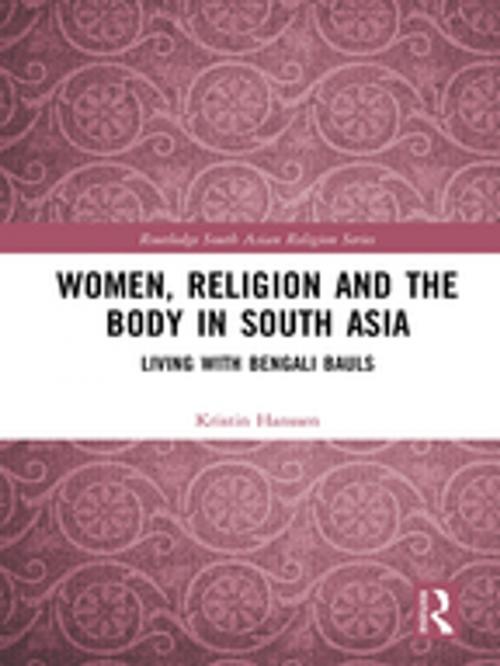Women, Religion and the Body in South Asia
Living with Bengali Bauls
Nonfiction, Social & Cultural Studies, Social Science, Cultural Studies, Ethnic Studies| Author: | Kristin Hanssen | ISBN: | 9781351357593 |
| Publisher: | Taylor and Francis | Publication: | April 19, 2018 |
| Imprint: | Routledge | Language: | English |
| Author: | Kristin Hanssen |
| ISBN: | 9781351357593 |
| Publisher: | Taylor and Francis |
| Publication: | April 19, 2018 |
| Imprint: | Routledge |
| Language: | English |
Noted for their haunting melodies and enigmatic lyrics, Bauls have been portrayed as spiritually enlightened troubadours traveling around the countryside in West Bengal in India and in Bangladesh.
As emblems of Bengali culture, Bauls have long been a subject of scholarly debates which center on their esoteric practices, and middle class imaginaries of the category Baul. Adding to this literature, the intimate ethnography presented in this book recounts the life stories of members from a single family, shining light on their past and present tribulations bound up with being poor and of a lowly caste. It shows that taking up the Baul path is a means of softening the stigma of their lower caste identity in that religious practice, where women play a key role, renders the body pure. The path is also a source of monetary income in that begging is considered part of their vocation. For women, the Baul path has the added implication of lessening constraints of gender. While the book describes a family of singers, it also portrays the wider society in which they live, showing how their lives connect and interlace with other villagers, a theme not previously explored in literature on Bauls.
A novel approach to the study of women, the body and religion, this book will be of interest to undergraduates and graduates in the field of the anthropology. In addition, it will appeal to students of everyday religious lives as experienced by the poor, through case studies in South Asia. The book provides further evidence that renunciation in South Asia is not a uniform path, despite claims to the contrary. There is also a special interest in Bauls among those familiar with the Bengali speaking region. While this book speaks to that interest, its wider appeal lies in the light it sheds on religion, the body, life histories, and poverty.
Noted for their haunting melodies and enigmatic lyrics, Bauls have been portrayed as spiritually enlightened troubadours traveling around the countryside in West Bengal in India and in Bangladesh.
As emblems of Bengali culture, Bauls have long been a subject of scholarly debates which center on their esoteric practices, and middle class imaginaries of the category Baul. Adding to this literature, the intimate ethnography presented in this book recounts the life stories of members from a single family, shining light on their past and present tribulations bound up with being poor and of a lowly caste. It shows that taking up the Baul path is a means of softening the stigma of their lower caste identity in that religious practice, where women play a key role, renders the body pure. The path is also a source of monetary income in that begging is considered part of their vocation. For women, the Baul path has the added implication of lessening constraints of gender. While the book describes a family of singers, it also portrays the wider society in which they live, showing how their lives connect and interlace with other villagers, a theme not previously explored in literature on Bauls.
A novel approach to the study of women, the body and religion, this book will be of interest to undergraduates and graduates in the field of the anthropology. In addition, it will appeal to students of everyday religious lives as experienced by the poor, through case studies in South Asia. The book provides further evidence that renunciation in South Asia is not a uniform path, despite claims to the contrary. There is also a special interest in Bauls among those familiar with the Bengali speaking region. While this book speaks to that interest, its wider appeal lies in the light it sheds on religion, the body, life histories, and poverty.















